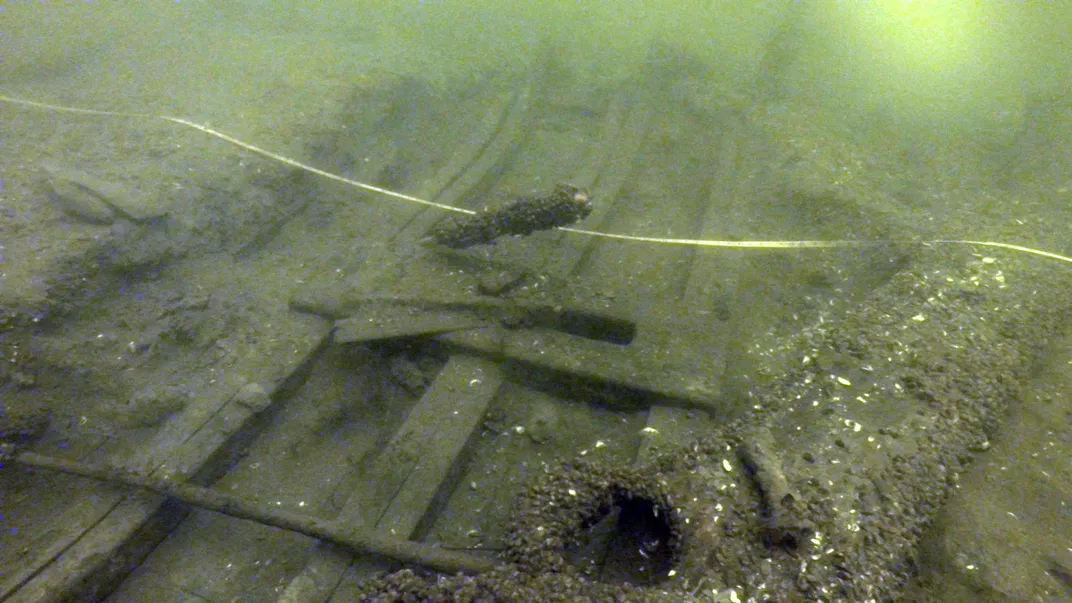Shipwreck Identified as Rare Canal Boat
Durham boats once fueled trade in the Erie Canal
Six years ago, a team of divers went to the bottom of Oneida Lake—a body of water known to contain the wreckage of plenty of old boats. There, they found something exciting: a wreck they though was a rare boat. But was the wreck really all that it seemed?
It took years, but the wreck has finally been identified as a Durham boat, reports Sarah Moses of the Post-Standard. That makes it the first find of its kind—and sheds light on the history of a boat that was once common on the Erie Canal.
The channel opened in 1825 to link Lake Erie with the Hudson River. At the time, it was the most technologically advanced canal in the world—and the Durham boat was the perfect vessel to take cargo through its locks and narrow spaces. The flat-bottomed boats could sail on as few as 20 inches of water and carry around 17 tons of cargo swiftly.
Durham boats even played a role in the Revolutionary War. Remember that iconic image of Washington crossing the Delaware to make a surprise attack on the Hessians? He was using a Durham boat—and the crafts transported supplies for American troops.
Despite that rich history, Durham boats are nowhere to be found these days. Only one known replica of the boat exists, so the discovery contributes to maritime history.
Now, more is known about the boat, which was discovered in 2011 by Tim Caza, Christopher Martin and Timothy Downing. In 2013, Ben Ford, an underwater archaeologist at the Indiana University of Pennsylvania, worked with the divers to uncover and analyze the boat. But it’s taken until now for the team to feel secure that their find is in fact a Durham boat.
An environmental scientist identified its materials, Moses reports: white oak for the frame and bottom, eastern white pine along the sides. The boat was 62.5 feet long and 10 feet wide and could carry up to 20 tons of cargo. Inside were 5.25 tons of small stones.
However, the rocks don’t appear to have sunken the boat; rather, researchers tell Moses its position indicates it probably went down in a storm. Given Oneida Lake’s reputation as a treacherous body of water, it’s no surprise its crew had to abandon ship.
After finding and carefully documenting the boat, the divers buried it once more. They weren’t playing catch and release—they were complying with law. As Moses notes, the Abandoned Shipwreck Act of 1987 means that submerged vessels belong to the state they’re found in. New York has defended its right to wrecks before, like when it prevented divers from turning a 19th-century schooner into a tourist attraction.
The wreck may be buried once more, but at least researchers now know a bit more about the evasive Durham boat.
(h/t Associated Press)
/https://tf-cmsv2-smithsonianmag-media.s3.amazonaws.com/accounts/headshot/erin.png)






/https://tf-cmsv2-smithsonianmag-media.s3.amazonaws.com/accounts/headshot/erin.png)